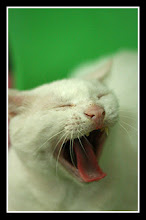The 1st ABF was jointly organized by the Davao City government, the Philippine Eagle Foundation, and the Wild Bird Club of the Philippines (WBCP). There were some 300 participants at the event--conservationists, nature enthusiasts, wildlife photographers, and birdwatchers. I was among the latter. I was there to help man the education booth where kids learned about Philippine endemic birds, particularly those found in Mindanao.
Birdwatching as a recreational activity is still somewhat new to Filipinos. I attribute that to the fact that it was the Spaniards and the Americans who colonized us, not the Brits. It seems that where the Brits were in Asia, birdwatching flourished--India, Hong Kong, Singapore, etc. People in these places have at least heard of birdwatching, even if they're not birders themselves. Here, it's rare that I don't hear a coarse joke when I tell people I'm a birdwatcher, or a birder.
Mainstreaming birding
WBCP has been largely responsible for mainstreaming birdwatching in the Philippines. There have been birders and birding groups before it, but it wasn't until WBCP that birdwatching got media attention, and eventually government support. The Department of Tourism under former Secretary Ace Durano initiated projects that promoted a number of localities in the country as birdwatching destinations.
 The Philippine Dept of Tourism in partnership with WBCP published two volumes of guidebooks identifying the localities with bird tourism potential
The Philippine Dept of Tourism in partnership with WBCP published two volumes of guidebooks identifying the localities with bird tourism potentialWhat's the big deal about birdwatching? Birdwatching is simply observing birds in their natural habitat--not in cages, not in aviaries. The big deal is in the fact that the Philippines has more than 600 endemic species, meaning these birds can't be found anywhere else but here. And since we are an archipelago, we have a number of small-island endemics, which are among the rarest birds in the world.
Such birds are of particular interest to avid birdwatchers--or 'twitchers' in birding lingo--who keep a life list. Such lists contain the species they've already seen, and twitchers travel the world to expand their lists. Many of them shell out serious money just to get a glimpse of rare birds. Birding trips usually require porters and guides, which can translate to income for locals.
Another good thing about birdwatching is there is no special infrastructure needed. Birders come for the birds, and they expect these birds to be in their natural homes, which, for Philippine endemics, usually mean the forests. In places without hotels, birders camp out. In places where there no roads, they ride horses or carabaos, or walk.
Then there's also the non-monetary benefit. Once the locals realize they have something special in their midst that people from across the world come to see, they are more likely to protect it. Protecting birds means protecting the forests they live in, which can have a multiplier effect for the goals of conservation.
Bird festivals
So back to the ABF...
The 1st ABF was also the 6th Philippine Bird Festival (PBF). The PBF is an annual event organized by WBCP to promote awareness of Philippine birds among school children. I've been a part of it since the first one in 2005.
The first two PBFs were in Quezon City. Then we brought it to Cebu to highlight the critically endangered Cebu Flowerpecker, possibly the rarest bird in the world. Then we went to Puerto Princesa to showcase Palawan's endemics. After Palawan, the PBF came to Balanga, Bataan, which is a known pitstop for migratory birds.
This year's PBF in Davao focused on the Philippine Eagle, our national bird and one of the most critically endangered raptors in the world. It is among the important species on the list of birders who come to the Philippines. Davao City was picked to host the event because the Philippine Eagle Foundation is based there.
I was personally glad that we did the PBF in Davao this year. I hadn't been back in Davao since 1999, and to be at the Insular again was a fitting homecoming. Also, as a durian lover, the city was paradise for me. The post-event trip to Eden Garden Resort was a wonderful treat for us. But the highlight of my post-event itinerary was my solo trip to The Pearl Farm. More on that in another entry.
All photos here by Arnel B. Telesforo




No comments:
Post a Comment